Plain language summary: Origins and impact of extrachromosomal DNA
Below is a plain language summary of Origins and impact of extrachromosomal DNA, a paper published in Nature in November 2024 by Cancer Grand Challenges team eDyNAmiC.
It has been co-developed by the team eDyNAmiC patient advocates. It was written by Shirin Khalili, Katell Maguet, Dave Chuter, and Andrew Lang, based on first draft versions written by the first authors of the paper.
What does the world’s biggest tumour sample collection tell us about ecDNA?
Some very aggressive cancers affecting children, adults, men, and women have been found to contain extrachromosomal DNA (ecDNA), which is a piece of a cell’s chromosome that broke off and reattached to itself to form a loop. To find out how common ecDNA is in cancer, who it affects, what genes it contains, and how it impacts patients, Team eDyNAmiC analyzed the largest collection of cancer samples so far - The Genomics England (GEL) 100,000 Genomes Project. Using specialist software, scientists analyzed DNA data from 15,832 biopsies of 14,778 patients with 39 sub-types of cancer. To prove that the software analysis method was valid, they did extra lab tests on some of the samples.
During their analysis, Team eDyNAmiC found that ecDNA tended to appear after chromosomes became unstable and cells lost their ability to make new chromosomes accurately. ecDNA molecules were made up of DNA that usually came from one chromosome, but sometimes more than one, and varied according to where in the body cancer started. Some carried the blueprint for proteins that help cancer grow, or that manipulate the immune system to keep the patrolling immune cells away. Sometimes ecDNA didn’t carry a blueprint for any protein at all, but instead helped enhance the ability of other nearby ecDNA molecules to produce those “pro-cancer” or “anti-immune” proteins.
The team discovered that across all the samples studied, ecDNA could be found in 17.1% of cases and varied considerably by tumor type. It was found in around half of the samples in some types of tumors (examples: liposarcoma, glioblastoma, HER2+ breast cancer) and hardly ever in other types (example: oligodendroglioma). It was found in cancers that run in families and that come from lifestyle choices, such as tobacco use. Finally, the authors found ecDNA more frequently in late-stage cancers and cancers that had spread, especially after targeted therapy and chemotherapy, and in tumors of patients with the shortest survival times. This strong link is what makes ecDNA a great bullseye that the Team is trying to hit, to change the prognosis from terrible to treatable.

